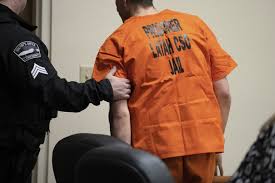 Judging delay is one area where analysis under the due diligence doctrine remains relevant. Under the due diligence doctrine, the court looks to whether “reasonable investigative efforts [were] made to apprehend the person sought.” Peacock, 77 S.W.3d at 288. Per Peacock, such a requirement “helps a court determine whether the probationer cannot be found because he is trying to elude capture or because no one is looking for him,” and in the case of the latter “the State should not benefit by doing nothing meaningful to execute a capias.” The Court of Criminal Appeals has made clear that merely sending a letter to the Defendant’s home and uploading a warrant into the TCIC database does not constitute diligence on the part of the State. Peacock, 77 S.W.3d at 288-89. A probation who stays in state at a known address and known phone number, without probation coming to look for him and arrest him, has a great due diligence claim. A Texas resident who stays in the State at a known address and phone number also can show unreasonable delay if a warrant is issued at large for their arrest for a new crime and no effort is made to apprehend them. Leaving the state or country, however, can cause the speedy trial right to be tolled, and doing so is a factor that will hurt the defendant in a speedy trial analysis.
Judging delay is one area where analysis under the due diligence doctrine remains relevant. Under the due diligence doctrine, the court looks to whether “reasonable investigative efforts [were] made to apprehend the person sought.” Peacock, 77 S.W.3d at 288. Per Peacock, such a requirement “helps a court determine whether the probationer cannot be found because he is trying to elude capture or because no one is looking for him,” and in the case of the latter “the State should not benefit by doing nothing meaningful to execute a capias.” The Court of Criminal Appeals has made clear that merely sending a letter to the Defendant’s home and uploading a warrant into the TCIC database does not constitute diligence on the part of the State. Peacock, 77 S.W.3d at 288-89. A probation who stays in state at a known address and known phone number, without probation coming to look for him and arrest him, has a great due diligence claim. A Texas resident who stays in the State at a known address and phone number also can show unreasonable delay if a warrant is issued at large for their arrest for a new crime and no effort is made to apprehend them. Leaving the state or country, however, can cause the speedy trial right to be tolled, and doing so is a factor that will hurt the defendant in a speedy trial analysis.
Sherman, Texas Probation Revocation Attorney: The Right to a Speedy Hearing (Part 2)
 But, despite the elimination of the common law due diligence “scheme,” the Court of Criminal Appeals has recognized in both pre-Garcia case law and post-Garcia case law that there exists a Constitutional speedy revocation hearing right even where claims of common law due diligence do not lie. The Court of Criminal Appeals specifically held this to be the case in Ballard v. State, stating “[a]lthough such a defendant cannot advance a due diligence defense, he has the statutory twenty-day remedy, and in appropriate circumstances, may have a Constitutional speedy hearing claim under Barker v. Wingo.” 126 S.W.3d 919, 921 n.8 (Tex. Crim. App. 2004)(citations omitted). The 20-day remedy is found in Texas Code of Criminal Procedure Article 42A.751(d) (If the defendant has not been released on bail as permitted under Subsection (c), on motion by the defendant, the judge who ordered the arrest for the alleged violation of a condition of community supervision shall cause the defendant to be brought before the judge for a hearing on the alleged violation within 20 days of the date the motion is filed.)
But, despite the elimination of the common law due diligence “scheme,” the Court of Criminal Appeals has recognized in both pre-Garcia case law and post-Garcia case law that there exists a Constitutional speedy revocation hearing right even where claims of common law due diligence do not lie. The Court of Criminal Appeals specifically held this to be the case in Ballard v. State, stating “[a]lthough such a defendant cannot advance a due diligence defense, he has the statutory twenty-day remedy, and in appropriate circumstances, may have a Constitutional speedy hearing claim under Barker v. Wingo.” 126 S.W.3d 919, 921 n.8 (Tex. Crim. App. 2004)(citations omitted). The 20-day remedy is found in Texas Code of Criminal Procedure Article 42A.751(d) (If the defendant has not been released on bail as permitted under Subsection (c), on motion by the defendant, the judge who ordered the arrest for the alleged violation of a condition of community supervision shall cause the defendant to be brought before the judge for a hearing on the alleged violation within 20 days of the date the motion is filed.)
Speedy hearing is a right whose recognition dates back at least as far as 1972 as illustrated by the Court of Criminal Appeals in Carney v. State, 573 S.W.2d 24, 26 (Tex. Crim. App. 1978) (“The right to a speedy trial guaranteed by the Constitutions of the United States and Texas is applicable to probation revocation hearings.”) (citations which include cases dating back to 1972 omitted). Per Carney, a denial of speedy revocation rights should be analyzed in the same manner as a denial of speedy trial under the Barker v. Wingo four prong balancing test. Carney, 573 S.W.2d at 27. The Dallas Court of Appeals has recognized this proposition of law as recently as 2015 in the unpublished case of Reed v. State, 2015 WL 4485550 (Tex. App.—Dallas 2015).
Sherman, Texas Probation Revocation Attorney: The Right to a Speedy Hearing (Part 1)
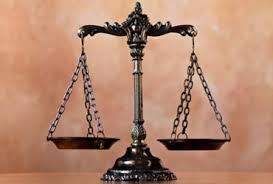 A Defendant formally accused of violating probation also has the right to a speedy revocation hearing. In addition to statutory provisions addressing timeliness in motions to revoke, the Court of Criminal Appeals has historically recognized two sources of law which provide for the right to a speedy revocation hearing: (1) the statutory and former common law doctrine of due diligence, and (2) Constitutional speedy hearing rights under Barker v. Wingo. 407 U.S. 514 (1971). of due diligence has been superseded by statute in Article 42A.751(d).
A Defendant formally accused of violating probation also has the right to a speedy revocation hearing. In addition to statutory provisions addressing timeliness in motions to revoke, the Court of Criminal Appeals has historically recognized two sources of law which provide for the right to a speedy revocation hearing: (1) the statutory and former common law doctrine of due diligence, and (2) Constitutional speedy hearing rights under Barker v. Wingo. 407 U.S. 514 (1971). of due diligence has been superseded by statute in Article 42A.751(d).
In 2015, the Texas Legislature added the statutory due diligence defense to the Code of Criminal Procedure, which overrode the common law defense. It states: For the purposes of a hearing under Article 42A.751(d), it is an affirmative defense to revocation for an alleged violation based on a failure to report to a supervision officer as directed or to remain within a specified place that no supervision officer, peace officer, or other officer with the power of arrest under a warrant issued by a judge for that alleged violation contacted or attempted to contact the defendant in person at the defendant’s last known residence address or last known employment address, as reflected in the files of the department serving the county in which the order of community supervision was entered.
When a motion to revoke is filed, the judge normally issues a warrant for the probationer’s arrest, though they may issue a summons. After fifty years of recognition by the Court of Criminal Appeals, the common law doctrine of due diligence in executing a warrant in motions to revoke has been eliminated. Compare Peacock v. State, 77 S.W.3d 285, 288-89 (Tex. Crim. App. 2002) (finding it imprudent to overturn 40 years of precedent requiring due diligence by State in executing motion to revoke capias) with Garcia v. State, 387 S.W.3d 20, 22 (Tex. Crim. App. 2012) (“we conclude that the 2003 statutory amendments to the Texas Code of Criminal Procedure Article 42.12 replaced the common-law due-diligence scheme).
Sherman, Texas Criminal Trial Attorney: The Right to A Speedy Trial in Texas (Part 3)
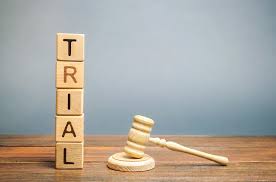 The reasons for the delay of a trial are important under the second prong, and the State will be required to put forward their reasons at a dismissal hearing. Right now, blood and drug results from the State laboratory are taking six months or so to process. A person sitting in jail on a misdemeanor is heavily prejudiced by waiting that long on a chemical result. A person awaiting felony trial is not as prejudiced per the caselaw, but after nine months or so prejudice can sometimes be shown. A lawyer should consider filing a speedy trial motion in any trial that will be lengthily delayed by chemical testing, DNA testing or other factors under the State’s control.
The reasons for the delay of a trial are important under the second prong, and the State will be required to put forward their reasons at a dismissal hearing. Right now, blood and drug results from the State laboratory are taking six months or so to process. A person sitting in jail on a misdemeanor is heavily prejudiced by waiting that long on a chemical result. A person awaiting felony trial is not as prejudiced per the caselaw, but after nine months or so prejudice can sometimes be shown. A lawyer should consider filing a speedy trial motion in any trial that will be lengthily delayed by chemical testing, DNA testing or other factors under the State’s control.
Timely assertion of the right is important as the third factor of the Barker analysis. The Court of Criminal Appeals recognized this in Zamorano when the Court categorized the Defendant’s request for speedy trial as “tardy” but found that the “defendant’s assertion of the right” prong should not weigh against the defendant because it was not a case where the Defendant never asked for a hearing and noted “nothing indicated an affirmative desire for delay” on the part of the defendant. Zamorano, 84 S.W.3d at 652. There are often reasons that a defendant would want a delay in trial proceedings, especially in the case of a potentially large sentence. An attorney filing continuances or a defendant continually signing pass slips can be something the Court will look at. The Dallas Court in Reed stated that a motion to dismiss gets lesser weight than an assertion of the right/motion for speedy hearing in a probation revocation case.
Zamorano also illustrates that very little prejudice need be shown by the Defendant in cases involving considerable delay under the fourth prong of the Barker analysis. In fact, the Texas Court of Criminal Appeals found that missing 11 days of work and having to regularly check in with a bail bond company was sufficient prejudice in light of the delay. Zamorano, 84 S.W.3d at 654.
Sherman, Texas Criminal Trial Attorney: The Right to A Speedy Trial in Texas (Part 2)
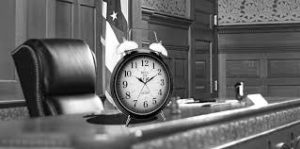 The Texas Court of Criminal Appeals analyzes both speedy trial and speedy revocation motion matters under the factors set forth by the United States Supreme Court in Barker v. Wingo, 407 U.S. 514 (1972). These factors include: (1) the length of the delay, (2) the reasons for the delay, (3) the defendant’s assertion of the right (to a speedy trial), and (4) the possible prejudice to the Defendant as a result of the delay. As applied to this case, the State cannot overcome the presumptive prejudice associated with a thirty eight month delay in executing the capias, a similar delay in hearing from the time of issuance, and at least three of four Barker factors weigh in favor of dismissal.
The Texas Court of Criminal Appeals analyzes both speedy trial and speedy revocation motion matters under the factors set forth by the United States Supreme Court in Barker v. Wingo, 407 U.S. 514 (1972). These factors include: (1) the length of the delay, (2) the reasons for the delay, (3) the defendant’s assertion of the right (to a speedy trial), and (4) the possible prejudice to the Defendant as a result of the delay. As applied to this case, the State cannot overcome the presumptive prejudice associated with a thirty eight month delay in executing the capias, a similar delay in hearing from the time of issuance, and at least three of four Barker factors weigh in favor of dismissal.
In Barker, the U.S. Supreme Court stated that the “length of delay that can be tolerated for an ordinary street crime is considerably less than for a serious, complex conspiracy charge.” Barker, 407 U.S. at 531. The Texas Court of Criminal Appeals has found a two year and ten month delay between arrest and hearing on a speedy trial motion to be “presumptively prejudicial” in a “plain vanilla DWI case.” Zamorano v. State, 84 S.W. 3d 643, 649, 654 (Tex. Crim. App. 2002). In addition, the Zamorano Court found that the factor of delay, in and of itself, weighed “heavily against the State,” after considering the almost four-year delay between arrest and ultimate resolution of the case. Zamorano, 84 S.W.3d at 649.
Sherman, Texas Criminal Trial Attorney: The Right to A Speedy Trial in Texas (Part 1)
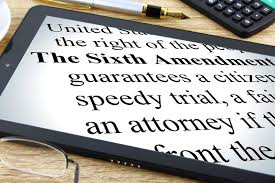 Going back to the Constitution of the United States, American citizens are guaranteed a speedy and public trial. The public part is why a Court cannot bar you from entering to watch a trial unless you are a witness, but the speedy part has been developed over the years. I will concentrate on the State of Texas right to a Speedy Trial this week, which is overwhelmingly similar to the Federal Right but without a few federal specific statutes that can effect federal criminal cases. Additionally, citizens also have a right to a speedy hearing if the State of Texas files a motion to adjudicate or revoke probation, which is the procedure upon an alleged probation violation to impose sentence or modification.
Going back to the Constitution of the United States, American citizens are guaranteed a speedy and public trial. The public part is why a Court cannot bar you from entering to watch a trial unless you are a witness, but the speedy part has been developed over the years. I will concentrate on the State of Texas right to a Speedy Trial this week, which is overwhelmingly similar to the Federal Right but without a few federal specific statutes that can effect federal criminal cases. Additionally, citizens also have a right to a speedy hearing if the State of Texas files a motion to adjudicate or revoke probation, which is the procedure upon an alleged probation violation to impose sentence or modification.
The Sixth Amendment to the United States Constitution says that “[i]n all criminal prosecutions, the accused shall enjoy the right to a speedy and public trial, by an impartial jury of the State and district wherein the crime shall have been committed, which district shall have been previously ascertained by law, and to be informed of the nature and cause of the accusation; to be confronted with the witnesses against him; to have compulsory process for obtaining witnesses in his favor, and to have the Assistance of Counsel for his defence.” Article I, Section 10 of the Texas Constitution states that “[i]n In all criminal prosecutions the accused shall hav† a speedy public trial by an impartial jury. He shall have the right to demand the nature and cause of the accusation against him, and to have a copy thereof.”
Yes, you can aid and abet a federal conspiracy in the Fifth Circuit (Part Four)
 However, in United States v. Walker, 621 F.2d 163 (5th Cir. 1980), the Fifth Circuit held that there was no error in giving an aiding and abetting instruction in a conspiracy case because the conspiracy counts are substantive counts. Aiding and abetting makes one a party to the crime by the actions that aid and abet the conspiracy. This logic seems flawed as conspiring to commit a substantive crime and aiding and abetting a substantive crime, which does not require an agreement to join in a conspiracy to commit the crime, are different manners and means in themselves. Thus, attorneys in the Fifth Circuit should continue to challenge aiding and abetting jury instructions in conspiracy cases all the way up to the Supreme Court.
However, in United States v. Walker, 621 F.2d 163 (5th Cir. 1980), the Fifth Circuit held that there was no error in giving an aiding and abetting instruction in a conspiracy case because the conspiracy counts are substantive counts. Aiding and abetting makes one a party to the crime by the actions that aid and abet the conspiracy. This logic seems flawed as conspiring to commit a substantive crime and aiding and abetting a substantive crime, which does not require an agreement to join in a conspiracy to commit the crime, are different manners and means in themselves. Thus, attorneys in the Fifth Circuit should continue to challenge aiding and abetting jury instructions in conspiracy cases all the way up to the Supreme Court.
This is illogical because one does not aid and abet an agreement. One can aid and abet a substantive crime, but an agreement is between two or more persons to commit a crime. The agreement between the two persons to commit the crime is the focus of the conspiracy count. Whether it is completed or not, two people are guilty of it if the agreement is proven along with an overt act and knowledge of illegality.
Similarly, and abetting can only take place when a completed crime has taken place, and one helps at the beginning or the end with the intent to help out, whether they conspire or do not conspire. If one finds out that their relative has robbed a bank, and they then decide to help launder the money or hide the evidence, they are potentially guilty of aiding and abetting said robbery, but not conspiracy to commit the same robbery. The Fifth Circuit needs to take a harder look at this issue.
Yes, you can aid and abet a federal conspiracy in the Fifth Circuit (Part Three)
 A plain language reading of the statute and logical sense also show that one cannot aid and abet a conspiracy under section 2. Section 2 and 846 link to the substantive offense in separate manners. 21 USC Section 846 states:
A plain language reading of the statute and logical sense also show that one cannot aid and abet a conspiracy under section 2. Section 2 and 846 link to the substantive offense in separate manners. 21 USC Section 846 states:
Any person who attempts or conspires to commit any offense defined in this subchapter shall be subject to the same penalties as those prescribed for the offense, the commission of which was the object of the attempt or conspiracy.
This makes it an equal crime to conspire to commit a subchapter violation. And, the crime does not have to be completed for a conspiracy transaction to take place. One must simply make an agreement to commit a federal crime, know that the agreement is unlawful, and one person must take an “overt act” in furtherance of the conspiracy. Even if the substantive crime of the conspiracy is not completed, one can still be convicted of conspiring to commit said crime.
Yes, you can aid and abet a federal conspiracy in the Fifth Circuit (Part Two)

Rear view of police detective standing and looking at the paper in front of the wall with map, pictures and sticky notes at office
The Fifth Circuit in Cowart and sister Courts of Appeals note that conspiracy is a distinct offense from that of aiding and abetting, and involves the additional element of preconcert and connivance not necessarily inherent in the mere joint activity common to aiding and abetting. United States v. Peterson, 524 F.2d 167, 174 (4th Cir.1975) (“Conspiracy” is a separate and distinct offense from that of aiding and abetting, and involves the additional element of preconcert and connivance not necessarily inherent in the mere joint activity common to aiding and abetting.) United States v. Townes, 512 F.2d 1057, 1058 (6th Cir. 1975) (Conspiring to commit crime with another and aiding and abetting in its substantive commission were distinct crimes, and Government should not have been forced to choose between deleting the aiding and abetting element of second count of indictment or dropping conspiracy charge under third count.) United States v. Krogstad, 576 F.2d 22 (3rd Cir. 1978) (Even where it is apparent that if one is guilty of aiding and abetting, that person of necessity must also have been a conspirator, the cases are clear that a jury may acquit on the conspiracy and convict on aiding and abetting.) United States v. Krol, 374 F.2d 776 (7th Cir. 1976) (Aiding and abetting the commission of a substantive offense is a crime different from a conspiracy to commit the same substantive offense.) Colosacco v. United States, 196 F.2d 165 (10th Cir. 1952) (Evidence justified conviction for aiding, abetting, counseling, commanding, inducing and procuring another to falsely assume and pretend to another to be an agent of internal revenue bureau and to demand money of such other person in such pretended character, and for conspiring to commit such substantive offense.)
Yes, you can aid and abet a federal conspiracy in the Fifth Circuit (Part One)
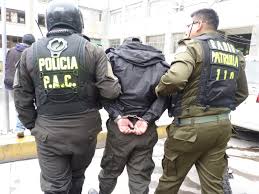 One of the realities that I must tell clients charged with conspiracy counts in the Eastern District of Texas, most often conspiracy to possess with the intent to distribute narcotics, is that you can aid and abet a conspiracy in the Fifth Circuit Court of Appeals, which includes all Texas Federal District Courts. Thus, the Government will not only submit jury charges for drug conspiracy, which the Fifth Circuit holds to be an independent crime in itself, they will submit a jury charge on aiding and abetting that conspiracy, which will end in the same result if found true beyond a reasonable doubt.
One of the realities that I must tell clients charged with conspiracy counts in the Eastern District of Texas, most often conspiracy to possess with the intent to distribute narcotics, is that you can aid and abet a conspiracy in the Fifth Circuit Court of Appeals, which includes all Texas Federal District Courts. Thus, the Government will not only submit jury charges for drug conspiracy, which the Fifth Circuit holds to be an independent crime in itself, they will submit a jury charge on aiding and abetting that conspiracy, which will end in the same result if found true beyond a reasonable doubt.
The United States Supreme Court held in the 50s that abetting only applies to substantive counts, not to conspiracy counts. Pereira v. United States, 347 U.S. 1 (1954). The Fifth Circuit noted that:
In Pereira the Court, in affirming one defendant’s conviction for conspiring to commit mail fraud and aiding and abetting the commission of mail fraud, rejected the double jeopardy plea. Petitioners had alleged that their conviction on both the substantive counts and a conspiracy to commit the crimes charged in the substantive counts constituted double jeopardy. ‘The Court found that: The essence of the conspiracy charge is an agreement to use the mails to defraud and/or to transport in interstate commerce property known to have been obtained by fraud…Brading’s conviction does not turn on the agreement. Aiding, abetting, and counseling are not terms which presuppose the existence of an agreement. Those terms have a broader application, making the defendant a principal when he consciously shares in a criminal act, regardless of the existence of a conspiracy.’
 Sherman & Plano, TX Criminal Defense Lawyer Blog
Sherman & Plano, TX Criminal Defense Lawyer Blog


